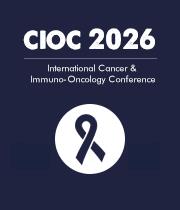Title : Horizontal comparison of the trend of pancreatic cancer in China and abroad: Lower development correlates with reduced pancreatic cancer burden, defying SDI-based predictions
Abstract:
Pancreatic cancer (PC), characterized by aggressive progression and poor prognosis, poses a critical global health challenge. This multinational study investigates epidemiological disparities in PC incidence and disease burden through a socio-demographic index (SDI)-stratified analysis, with a focus on China’s unique patterns. Utilizing data from the Global Burden of Disease Study 2021, we employed DisMod-MR 2.1 for incidence estimation and Cause of Death Ensemble modeling (CODEm) for mortality analysis, integrating geospatial data, cancer registries, and vital registration systems. Age-standardized rates (ASRs) for incidence, mortality, and disability-adjusted life years (DALYs) were calculated using WHO population standards, with temporal trends assessed via estimated annual percentage changes (EAPC).
Our analysis reveals a strong positive correlation between SDI levels and PC incidence: high-SDI countries exhibited significantly higher ASRs compared to low-SDI nation, reflecting developmental and lifestyle influences. China, a middle-SDI country, demonstrated an epidemiological paradox. Despite reporting 118,665 incident cases in 2021 (the highest national count globally), it maintained below-global-average incidence (5.6 vs 6.0 per 100,000) and, while its DALYs were lower than most developed countries. Contrasting previous studies, recent improvements in PC metrics were observed in low-SDI Asian and African nations, attributable to enhanced medical infrastructure (e.g., WHO Global Cancer Initiative) and expanded cancer registries. For instance, African countries strengthened screening capacity through collaborations like the African Organization for Research and Training in Cancer (AORTIC). However, concurrent rises in mortality and DALYs in these regions underscore persistent challenges from delayed diagnoses and resource limitations. In contrast, China’s population-scale healthcare framework achieved effective disease control despite demographic pressures, highlighting systemic advantages in managing complex malignancies. This divergence suggests population size alone cannot be considered to explain disease burden variations. Structural analysis indicates China’s government-led healthcare system, emphasizing universal screening and centralized prevention policies, likely facilitates earlier detection and control DALYs compared to market-driven systems with fragmented diagnostic access.
These findings challenge SDI-centric disease burden models and emphasize the mediating role of healthcare system architecture. While socioeconomic factors influence PC incidence, centralized health policies and equitable diagnostic access critically modulate outcomes. The study underscores the necessity of integrating health system characteristics into global cancer control strategies, particularly for malignancies requiring complex diagnostic pathways. Policy-driven healthcare organization, as exemplified by China’s unified framework, may mitigate mortality disparities even in resource-constrained settings. Further research should prioritize evaluating low-cost screening interventions in under-resourced systems to address the rising burden in transitioning economies.



